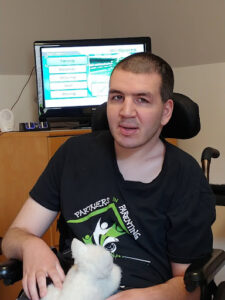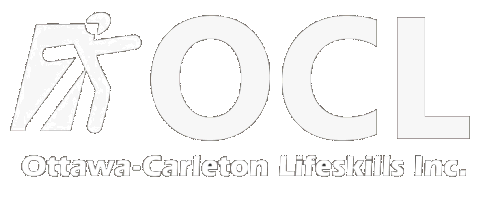Table of Contents
- Adult Learning Disabilities
- Communication Difficulties
- Strategies and Therapy To Improve Communication
- Total Communication
- Intensive Interaction
Adults with special needs and learning disabilities often have trouble communicating. This can be because of their speech, language, social skills or behaviour. However, some programs and techniques can help adults with learning disabilities talk about what they want and say what they need. Even if an adult has trouble communicating, there are ways to give them the tools they need to start conversations, respond and choose.
Adult Learning Disabilities
Learning disabled individuals were institutionalized until recently. Some people in these facilities could have cared for themselves or lived independently with little help. Learning disabled people are still institutionalized in several other nations.
Many disabled adults now live in communities and have active lives, thankfully. New inclusion principles in society and schools are great steps forward. Lifelong institutionalization means older adults will need ongoing care and assistance, whereas youth have fresh hope. They have greater possibilities in school and when they’re adults. In many nations, those with learning difficulties now contribute to society.
Communication Difficulties
A lot of adults with learning disabilities have trouble communicating in different ways. Among these problems are:
- Comprehension – not being able to understand what other people are saying.
- Expression – being unable to say what you think and feel (or not being able to talk at all).
- Social skills – not knowing how to act in social situations or follow social norms.
Hearing or vision impairments can exacerbate these issues. People with many challenges may have a global communication delay.
Behaviour is tied to communication. Problems lead to inappropriate or provocative behaviour. The person may grow irritated at not being understood or have trouble comprehending what others anticipate.
Strategies and Therapy To Improve Communication
Before looking at others’ communication problems, we must assess our own. As competent communicators, we can alter our communication to serve others. This entails using clear language and giving the audience additional indications. Communicating with persons with learning difficulties requires techniques. If a person has autism, you can utilize visuals; if they have hearing loss, you can use signs and be more aware of their surroundings; if they have a major learning handicap, you can use reference items.
Every adult is different; thus, it’s necessary to have techniques to interact with persons who possess learning challenges individually.
Total Communication
This holistic approach to communication uses a variety of modalities or “outside the box” thinking to develop a system that works for a person. Other factors include:
- Using any means possible to send and receive a message.
- Creating the best fit to help a person communicate, making the most of their skills and minimizing problems.
- A “catch-all” ensures a person has at least one way to communicate.
- Helping and supporting each person gives them the tools and chances they need to get involved – and reach their full potential.
Here are some overall communication tactics. This list isn’t exhaustive but includes several communication issues. Individuals may use a combination of these methods.
- Touch cues – These are a way to tell people who are blind or deaf what is going to happen or who is there.
- Texture cues / objects of reference – People can build up a wide range of ways to talk to each other by using objects or tactile symbols.
- Environmental cues – These are general ways to describe many signs we see around us. They can have pictures, logos, colours, sounds and different types of textures.
- Facial expression, gesture and body language – These are some of the most obvious examples of nonverbal communication. They are important because they carry much meaning and can be used effectively by people who have trouble talking.
- Pictures / visual strategies – Visuals and pictures can be helpful for many people who have trouble communicating, and can be used to help them understand.
- Print and symbol systems – When other communication methods don’t work, written words or easily understood symbols can be used.
- Speech, voice and language – Many people who have trouble communicating can still use their voice and speech.
- Eye-gaze and partner-assisted scanning – Using eye-gaze to talk to a partner or control a device are other ways that many people can use to get their thoughts and needs across.
Intensive Interaction
Nonverbal people with “severe” autism or learning disabilities can be hard to engage with. They have trouble comprehending and expressing their needs and emotions. “Severely” autistic means nonverbal, non-communicative, and “in their world”. These people have trouble following directions and may act aggressively when addressed or urged.
Intensive contact creates an engaging, non-threatening communication environment for those with autism and severe learning disabilities. The strategy is modeled after how we initially connect with naturally growing children including sounds, touch and eye contact. Brief interactions may develop. 
The person should:
- Accept our presence
- Attend to another person
- Allow some presence in personal space
- Allow and use a little touch
- Look someone in the eyes
- Use facial expressions
- Pay attention to body language and how you look
- Take turns talking to each other
- Take turns making noises that start to mean something
- Try out different ways of talking
- Find out what causes what.
The person is an energetic communicator who will take the lead and feel in charge. With this strategy, providers may form a connection, generate a pleasurable exchange, lessen troublesome behaviour and enhance communication skills. Sessions may start small but grow in length and activity. Daily one-on-one sessions are recommended.
Choose OCL
Since 1980, Ottawa-Carleton Lifeskills Inc. (OCL) has been helping Ottawa-region families with adults who have developmental disabilities and disorders. Your loved one will get the best care and support from OCL, plus the right steps will be taken to make sure they remain safe and healthy.
To learn more, please contact us in Ottawa at (613) 254-9400 or visit OCL online today.



